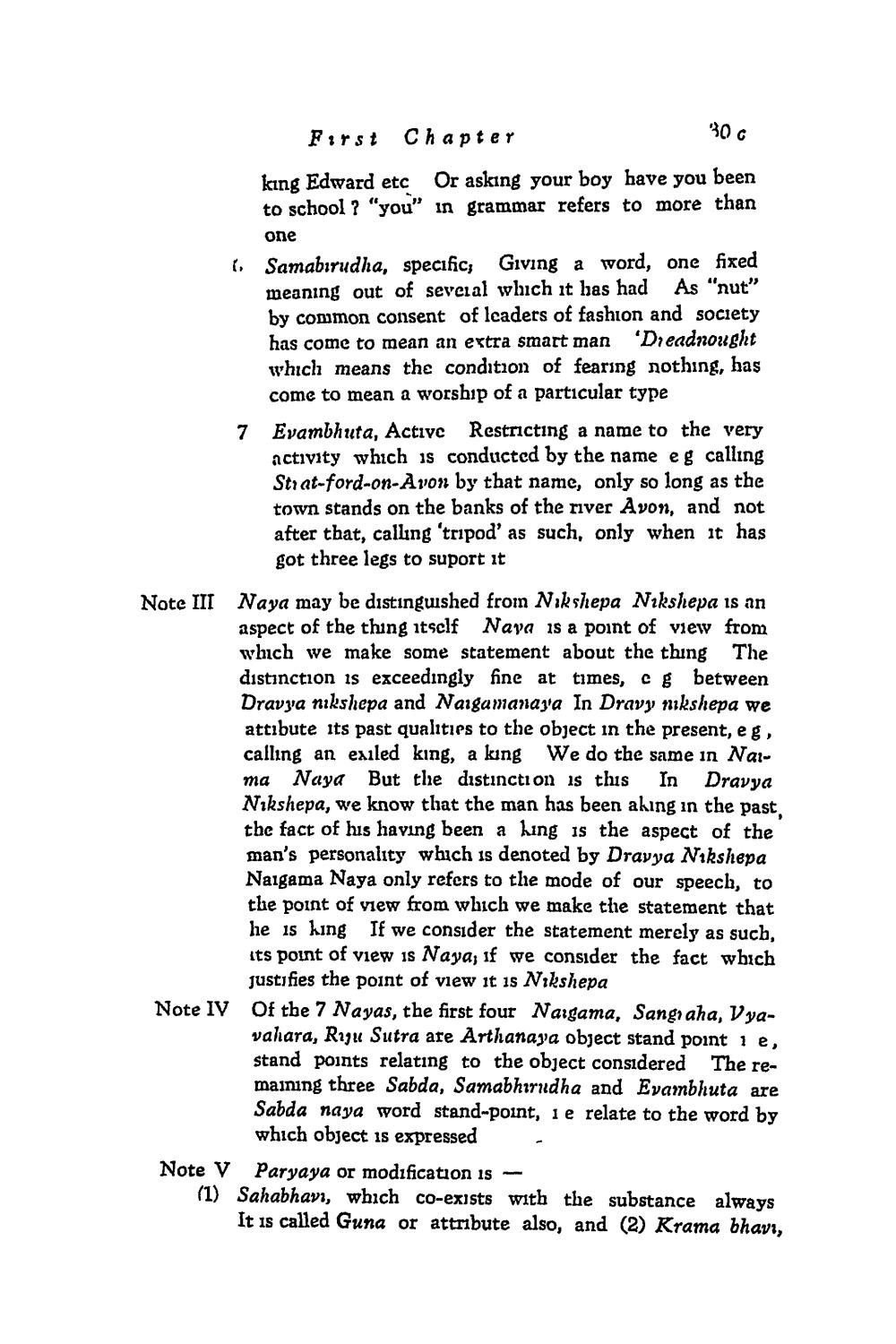________________
First Chapter
900
king Edward etc Or asking your boy have you been to school ? "you" in grammar refers to more than one Samabirudha, specific, Giving a word, one fixed meaning out of several which it has had As "nut" by common consent of leaders of fashion and society has come to mean an extra smart man 'Dreadnought which means the condition of fearing nothing, has come to mean a worship of a particular type
7
Evambhuta, Active Restricting a name to the very activity which is conducted by the name eg calling Strat-ford-on-Avon by that name, only so long as the town stands on the banks of the river Avon, and not after that, calling 'tripod as such, only when it has got three legs to suport it
Note III Naya may be distinguished from Nikshepa Nikshepa is an
aspect of the thing itself Naya is a point of view from which we make some statement about the thing The distinction is exceedingly fine at times, cg between Dravya nikshepa and Nagamanaya In Dravy nikshepa we attibute its past qualities to the object in the present, eg, calling an exiled king, a king We do the same in Narma Naya But the distinction is this In Dravya Nikshepa, we know that the man has been aking in the past the fact of his having been a king is the aspect of the man's personality which is denoted by Dravya Nikshepa Naigama Naya only refers to the mode of our speech, to the point of view from which we make the statement that he is king If we consider the statement merely as such, its point of view is Naya; if we consider the fact which
justifies the point of view it is Nikshepa Note IV Of the 7 Nayas, the first four Nargama, Sangraha, Vya
vahara, Riu Sutra are Arthanaya object stand point i e, stand points relating to the object considered The remaining three Sabda, Samabhirudha and Evambhuta are Sabda naya word stand-point, ie relate to the word by
which object is expressed Note y Paryaya or modification is (1) Sahabhavi, which co-exists with the substance always
It is called Guna or attribute also, and (2) Krama bhavi,




